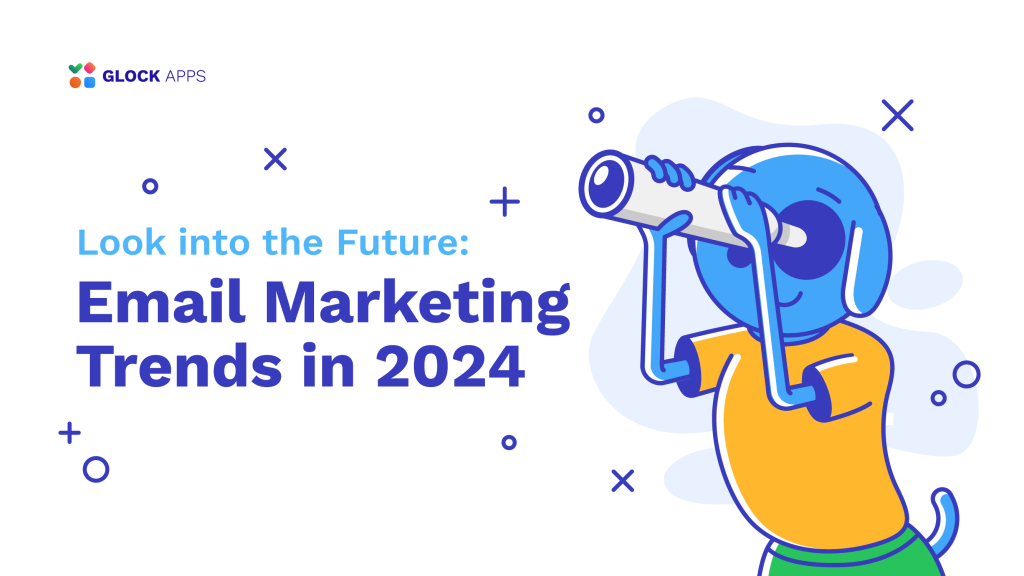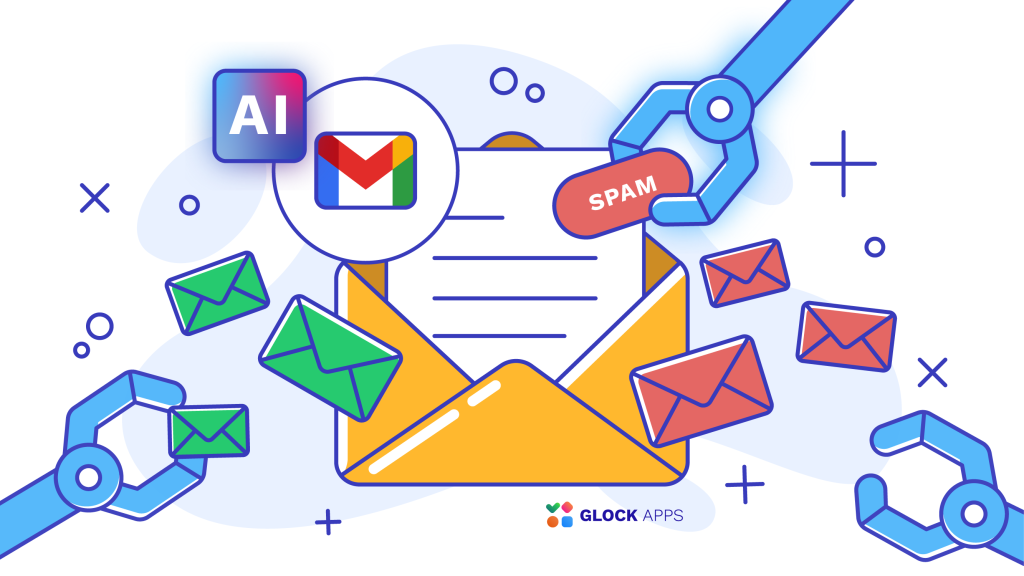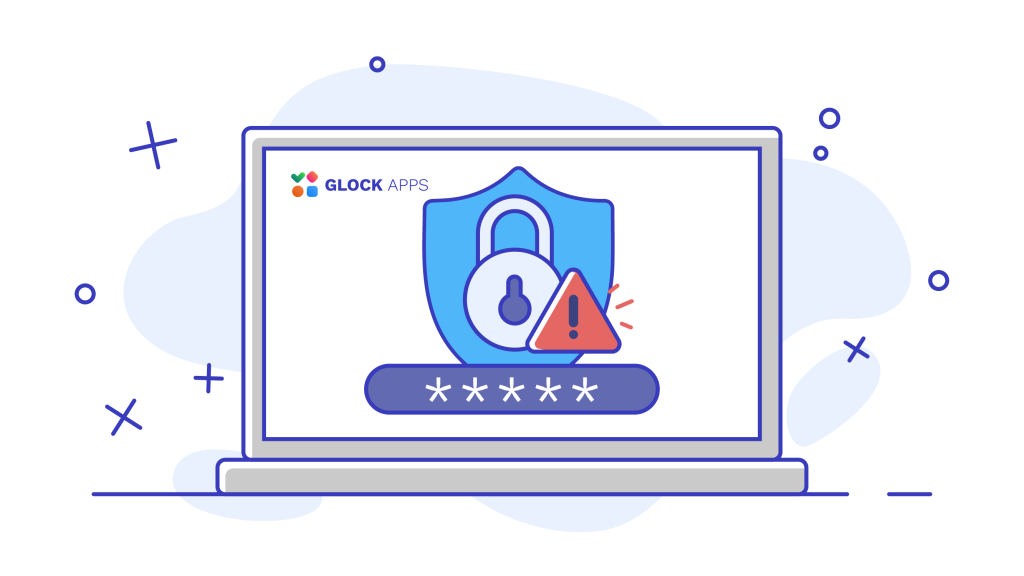Look into the Future: Email Marketing Trends in 2024

Table of contents
According to Statista, there were about 55 million email users worldwide in 1997; by 2026, that number is expected to raise to 4.73 billion. This startling increase highlights how popular email is in our globally connected world.
How Email Marketing Evolved
An exciting electronic mail entered our lives in the 1990s. We were so enthralled with the idea of reaching someone on the other end of the earth within minutes! Since then email has evolved from a channel of personal communication to an effective marketing tool. Email brought new opportunities to brands and became an integral part of many business processes.
But it wasn’t always like this. There was the time when marketers were using the “send and forget” tactic, believing that the more email messages they sent, the higher the chance of closing a deal. Remember all those unwanted emails that flooded your inbox?
The adoption of anti-spam laws in many countries has moved the focus from quantity to quality. Email marketers started using confirmed opt-in methods to acquire email recipients and a personalized approach to the email subscribers, respecting their preferences.
The introduction of email automation made this shift painless. The routine of email marketers was streamlined by these state-of-the-art technologies, which included capabilities like recipient’s activity tracking, contact segmentation, email scheduling, and deliverability testing – email automation tools took email marketing to the next level.
But trends in email marketing change over time. Email automation is about to undergo a radical transformation because of the rise of artificial intelligence (AI) and machine learning.
2024 Email Marketing Trends: What’s in Store for Us
Keeping up with the latest email marketing trends is essential for survival in today’s ever changing, technologically driven environment. Let’s consider what to expect from email marketing in the coming year together. Are you ready for this exciting journey?
#1. AI and Machine Learning for Email Marketing Automation

Email marketing is going into a more intelligent and personalized space as AI and machine learning advance quickly. Large datasets may be analyzed by AI systems, which helps marketers understand customer behavior, preferences, and triggers.
With the utilization of data segmentation, highly customized and relevant email messages may be created and sent at the right time.
AI-Powered Content Generation
AI is without a doubt one of the most important developments in email marketing, which helps with content generation and creation of fascinating emails responding to the subscribers’ needs.
AI-powered tools can create attractive subject lines, call-to-action buttons that direct visitors to customized landing pages, and entire emails that resonate with your audience by utilizing machine learning algorithms and natural language processing.
Predictive Email Personalization
Hyper-personalization is an email marketing trend for the coming year. Machine learning algorithms analyze client data and predict future behavior.
This gives marketers the ability to customize offers, content, and even email sending time based on user preferences. It is to note that to provide an incredibly customized client experience, you should, nevertheless, strike a balance between automatically generated email campaigns and a human touch.
Automatically Triggered Emails
Automatically triggered emails are personalized messages initiated by specific events, actions or behaviors of the recipient.
Email triggers could range from sending birthday wishes with an offer, following up after a purchase, or prompting an email if a user abandons a shopping cart. They are timely, personalized, and exceptionally relevant, resulting in an extremely higher click-through rate compared to regular email communications.
Best Email Sending Time Calculation
AI can assist in determining the best time to send emails to the recipients by predicting when each recipient is most likely to check their inbox and interact with the content, as opposed to sending emails in bulk at a set time. This strategy increases the likelihood that the email will be noticed, which increases click-through rates.
Effective Spam Filtering

Email users will likely see a decreased amount of spam in their inboxes thanks to the AI-powered spam filtering mechanism. AI is particularly skilled at spotting fraudulent communications, like phishing scams, and can effectively identify which emails are spam by analyzing data and spotting patterns. It can also recognize potential threats, like bogus email addresses or deceptive websites.
Some email providers are already using AI to filter out spam emails. Google, for example, has recently released a spam filtering system update – AI-powered spam filter – which was labeled as one of the largest defense upgrades in recent years.
Essentially, email users will have a safer and more organized inbox by utilizing AI for spam identification and filtering. Email marketers can take advantage of this by increasing the likelihood that their subscription emails will arrive in the inbox and be viewed by the intended recipients.
Thanks to AI-based email marketing, even small businesses can now successfully compete with large corporations in email communications. However, it’s important to understand that the success of your email marketing campaigns ultimately depends on how well you understand your target audience and how well you can create content that truly speaks to them.
#2. Interactive Elements in Emails for Better User Experience

The coming year looks to take email interaction to the new level. Interactive emails are becoming a disruptive force in email marketing. Such emails have components that encourage readers to click, swipe, or interact with the email content directly. Emails look more like web pages rather than traditional email messages.
Here is what can be used in the emails to engage recipients better:
Animated Pictures
GIFs are the quickest eye-catching way to add visual appeal to an email. They were working in the passing year and they are to be an email marketing trend in 2024. These short, animated graphics have the power to effectively and entertainingly express a message or a feeling and grab the reader’s attention increasing the email click-through rates.
Games, Polls, Surveys, and Quizzes
Similarly to GIFs, these interactive components can increase clickthrough rates 2-3 times because they also attract the reader’s attention! These components increase engagement, improve recall, and pique interest by requiring receivers to actively engage. You can use interactive content in your email communications if you want to add more intrigue to your material.
Timers
The fear of missing something is a good incentive for the majority of recipients. A countdown timer included in an email showcasing a time-limited offer is an effective tool for businesses to increase click-through rates.
Rotating Banners
You can use such a picture or carousel in an email to showcase more than one item or draw attention to multiple features of a product – this allows you to use available space smartly and draw the readers’ attention.
Embedded Videos
Videos in an email is still an email marketing trend for 2024. It’s an assured way to promote a brand, share instructional materials, tutorials, guides, and increase user interaction. Videos stand out as one of the most exciting interactive elements out there!
Accelerated Mobile Pages
Google’s open-source project, Accelerated Mobile Pages (AMP) for email, enables senders to incorporate AMP elements into their emails to make them more eye-catching and interactive.
It becomes easier for email users to interact with content within their email client and perform tasks like completing forms, sending out invitations, and viewing product catalogs without ever leaving the email.
It’s important to keep in mind that interactive components should fascinate viewers rather than confuse or overwhelm them. The goal is to improve and streamline their email interaction, making it more pleasurable. Interactive content should be consistent with your brand and tailored to the interests of your target audience whatever form it takes.
Also, keep in mind that a lot of emails are being opened on mobile devices. Thus, regardless of the email service provider you use, make sure your design is responsive to mobile devices. You run the risk of losing a sizable portion of your audience if your interactive features do not scale down to fit smaller screens.
#3. Super Email Campaign Personalization for Better Conversions
Gone are the days when generic email blasts ruled the world. Email marketing audience now demands more – a personalized approach, a communication crafted specifically for them. This is where super personalization comes to the scene.
Dynamic Email Content
If you collect data about your subscribers – their location, interests, past purchases, and any other information, it can help you customize emails for them. For example, you can use variables like {product_name} to customize product recommendations based on previous purchases or {location} to dynamically integrate the subscriber’s location.
With the modern email marketing tools, you can even change the whole email content dynamically in order to better customize your emails and serve the subscriber’s needs.
Customized Email Templates
Everything matters in the quest for super personalization, and an email template’s design is no exception. You’ll want to ensure that every recipient of your emails finds them visually appealing and instructive. When designing your emails, keep in mind that almost half of email users read emails on their mobile devices.
Therefore, it’s important to test your design to see how it displays in different applications. If you include GIFs, videos or other interactive elements in the email, they must be equally accessible by all your recipients. You may need to prepare different email templates for different email users with regard to the email clients they use.
Emails Triggered by User Behavior
When a user browses your website or uses an application, their actions can trigger the delivery of a personalized email for a variety of purposes, such as sending of welcome messages, reminders about subscription expiration, proposals to upgrade if they reach the subscription limitations, etc.
Considering that such emails are behaviorally triggered, their open rate is higher than the one of regular email campaigns. Taking advantage of this possibility can greatly increase the efficacy of your email marketing campaign with little work.
In order to deliver a highly personalized email experience, email marketers can utilize artificial intelligence tools that can forecast customer behavior, analyze data, and automate procedures.
#4. Respect of User Data Privacy

Data privacy is a persistent problem that didn’t lose its vitality. And email marketing trends in 2024 continue to reflect this ongoing concern.
When your subscribers give you their personal information, they have confidence in your competence to manage their data appropriately. That confidence may be ruined by crossing the line or giving the impression that you are misusing their private data.
Although using technologies in your business processes for audience segmentation, user behavior tracking, and targeted content production is advantageous, it’s important to utilize them smartly. Email recipients may feel uncomfortable if they suspect you are tracking each and every action they take.
Despite the fact that GDPR has set clear rules for data usage and privacy in Europe, many other countries are still lagging behind. However, the general email marketing trend is clear: recipients are demanding that senders respect their data privacy rights as they become more aware of them.
To align your email marketing practices with the users’ demands, you can do this:
Publish Privacy Policy
Your subscribers should be made aware of the data you collect when they are subscribing to your product, creating an account, or browsing your website, how you utilize the collected data and whom you may share it with (for instance, your payment processor or any other third parties you partner with). You should publish a concise, understandable privacy statement on your website and include the link to it in all of your email communications.
Give More Control
Allow subscribers to choose what information they want to disclose and how much of it. You can make the fields asking for their email address and name mandatory and leave other fields – like gender, age, country, interests etc. – optional.
It’s helpful to create an admin center where they can update their contact information, change preferences or sending frequency and include the URL to their profile in each email communication. The need of enabling people to simply opt in or out of email communications based on their preferences is emphasized by data privacy legislation.
Allow to Unsubscribe Easily
Double check your unsubscribe process is working before launching an email campaign. Make sure the unsubscribe link is prominently displayed so the recipients don’t have to guess where it can be. This guarantees a better user experience and preserves you from unnecessary spam reports.
Strike Good Balance
It’s important to honor the subscriber’s privacy when they share their data. Do not overly customize your emails, and do not go beyond reasonable limits.
For instance, if a visitor has viewed particular products on your website, sending a follow-up email with the exact same products may seem intrusive. Alternatively, think about sending an email that suggests the whole catalog that those products fall within. This method allows customization to improve the user experience while preserving the visitor’s privacy as a whole. In email marketing, a good balance is essential.
After all, trust is the basis of any successful relationship, including the one between email senders and recipients.
Closing Thoughts
After considering the email marketing trends for 2024, it appears that the future of email marketing stands for an exciting junction of innovation, technology, sustainability, and responsibility – an environment that is constantly evolving, pushing boundaries, and creating new ones.
Email marketers are facing a difficult but exciting journey ahead, whether it is implementing automation, creating engaging emails, emphasizing sustainability, or protecting data privacy. That being said, the ultimate goal is still to add value for customers, encourage deep dialogue, and build long-lasting relationships based on confidence.
The strategies, instruments and metrics may undoubtedly change. But the human element – the core of email marketing – will always be there. It is important to remember this while following trends and utilizing technologies.



